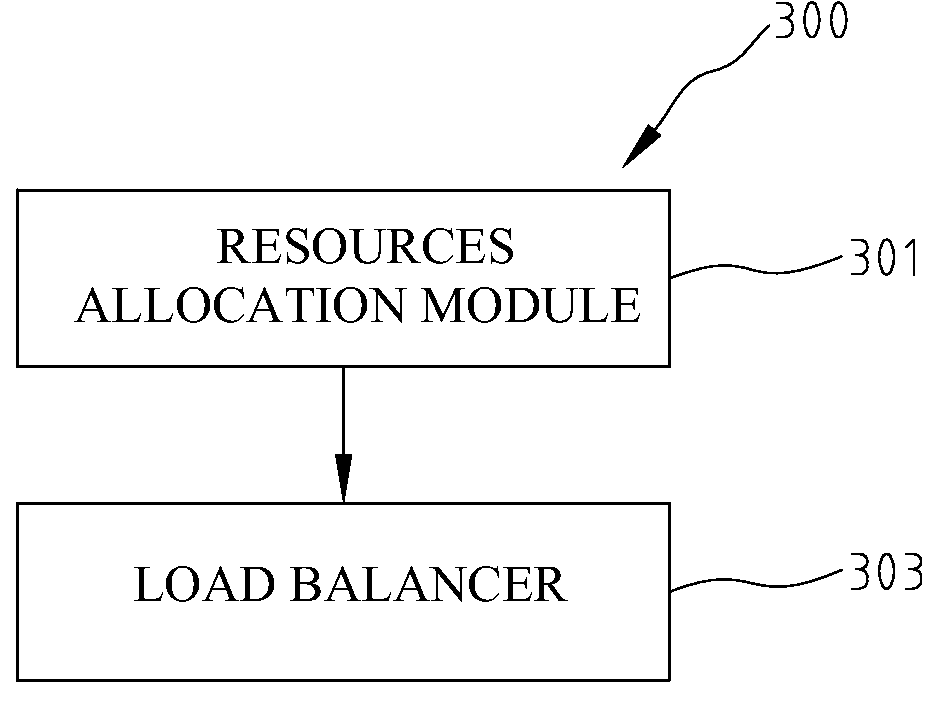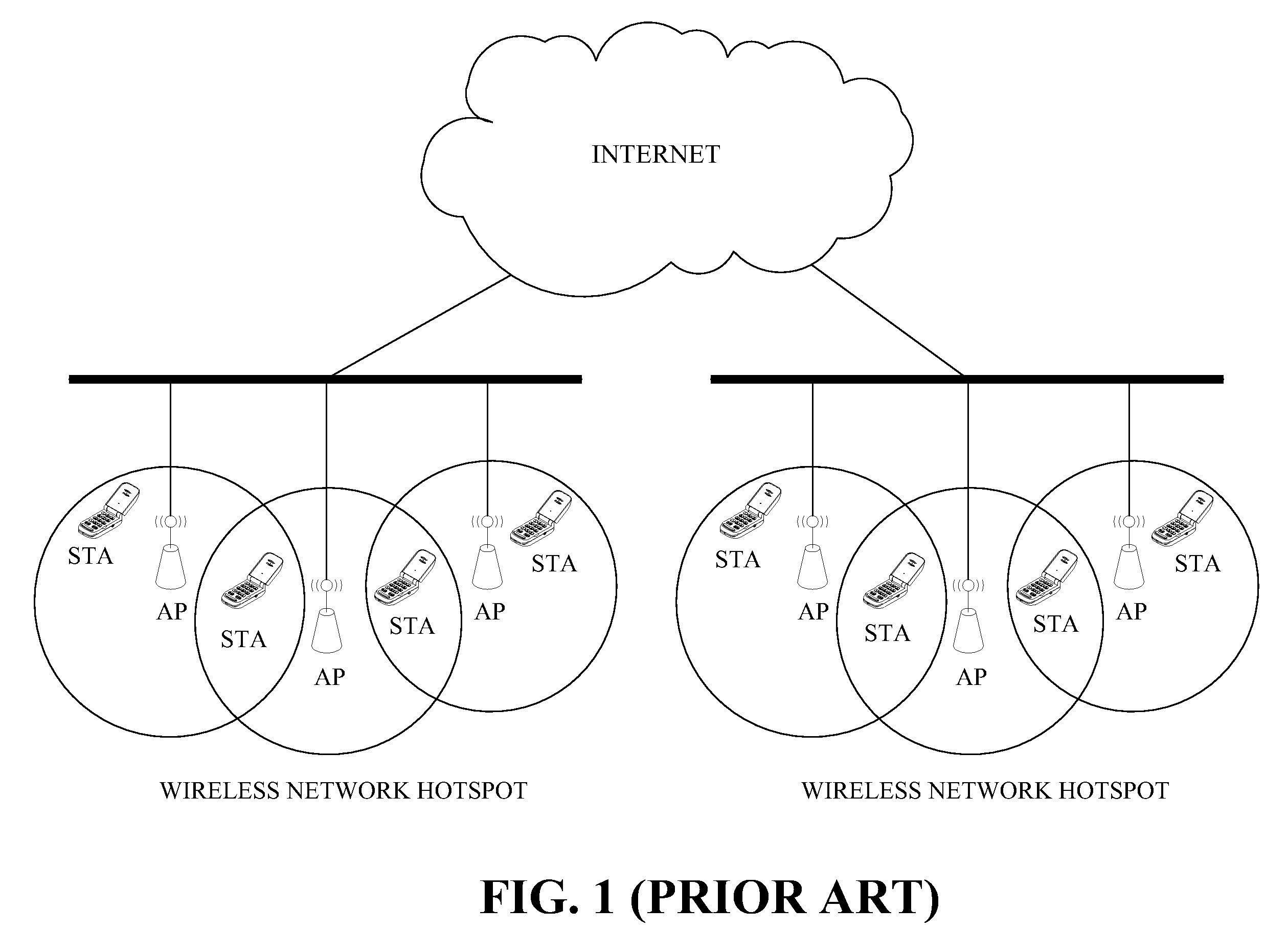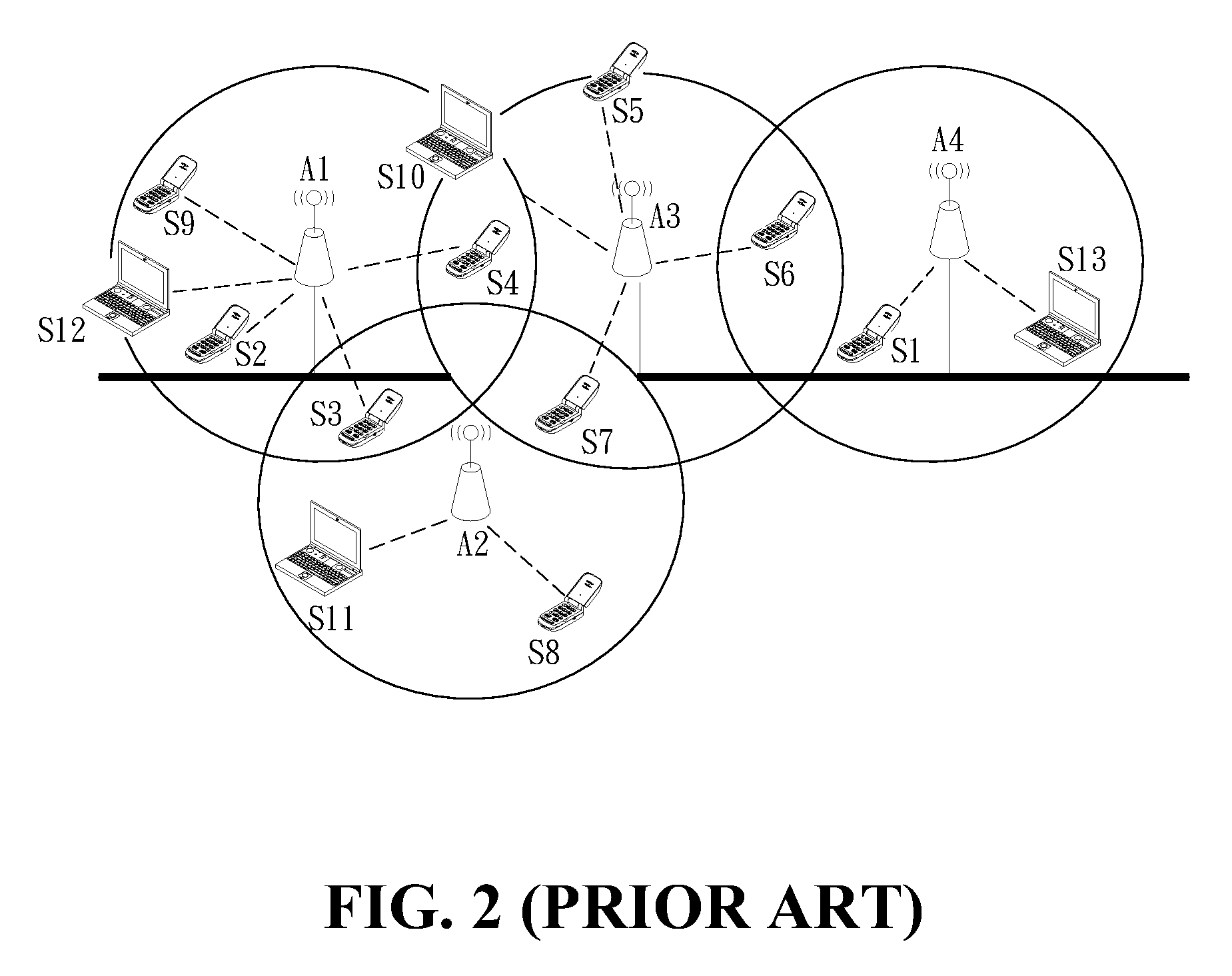Load Balancing Apparatus And Method In Wireless Network Hotspots
a wireless network and load balancing technology, applied in the field of apparatus and methods for load balancing in wireless network hotspots, can solve the problems of ineffective utilization of bandwidth, inability to fully discuss load balancing between access points (aps) and overall capacity, and inability to ensure the quality of non-qos services. , to achieve the effect of improving the overall bandwidth utilization of wireless network
- Summary
- Abstract
- Description
- Claims
- Application Information
AI Technical Summary
Benefits of technology
Problems solved by technology
Method used
Image
Examples
Embodiment Construction
[0031]FIG. 3 shows a schematic view of a load balancing apparatus of wireless network hotspot of the present invention, where the hotspot includes a plurality of APs and STAs. As shown in FIG. 3, a load balancing apparatus 300 includes a resources allocation module 301 and a load balancer 303. When an AP cannot admit a QoS request of an STA, for example, the available bandwidth of an AP is below a threshold, or does not have a sufficient bandwidth, load balancing apparatus 300 performs the dynamic load balancing operation, as shown in FIG. 4.
[0032]Resources allocation module 301 first establishes the resource model and the relation between the APs and the STAs of the wireless network hotspot, and finds an LBSP, as shown in step 401 of FIG. 4. Based on the LBSP, load balancer 303 reallocates the network resources and dynamically adjusts the load of the APs in the wireless network hotspot to improve the bandwidth utilization of the overall wireless network, as shown in step 403.
[0033]...
PUM
 Login to View More
Login to View More Abstract
Description
Claims
Application Information
 Login to View More
Login to View More - R&D
- Intellectual Property
- Life Sciences
- Materials
- Tech Scout
- Unparalleled Data Quality
- Higher Quality Content
- 60% Fewer Hallucinations
Browse by: Latest US Patents, China's latest patents, Technical Efficacy Thesaurus, Application Domain, Technology Topic, Popular Technical Reports.
© 2025 PatSnap. All rights reserved.Legal|Privacy policy|Modern Slavery Act Transparency Statement|Sitemap|About US| Contact US: help@patsnap.com



